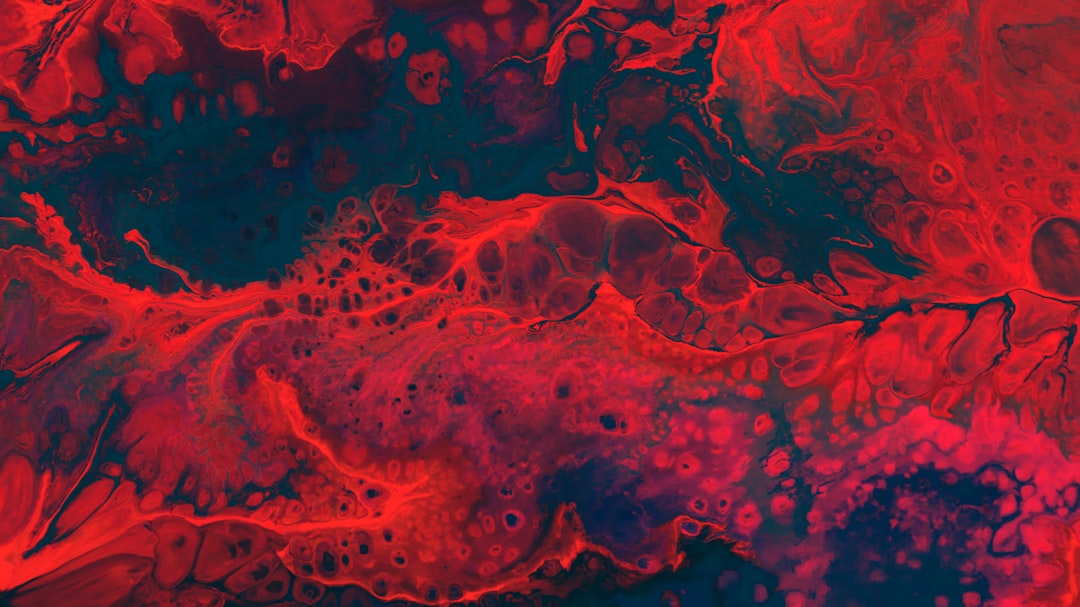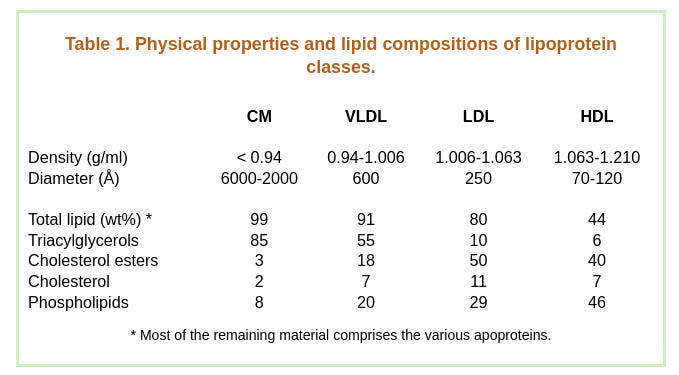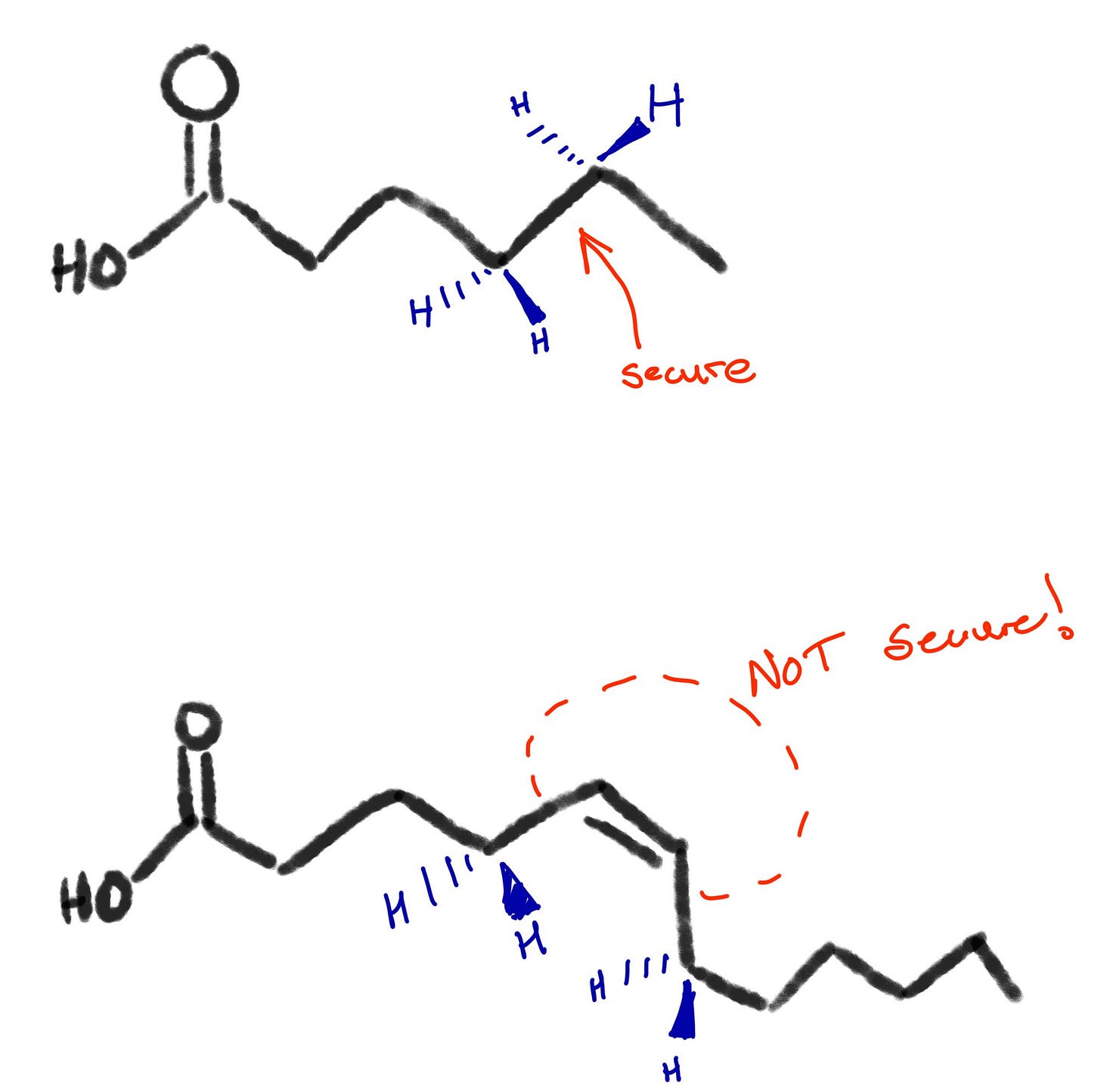Root Cause of Chronic Disease
There are two things your cells cannot live without: Fuel & Blood. It would be devastating if both the fuel and the blood turned on you. This is what that would look like.

In the early-to-mid 1900s, the rates of stroke & heart attacks were on the rise.
Smoking was a known contributor to this phenomenon. It is a dense source of oxidative stress. When you take your first puff of cigarette smoke, it feels like your chest is on fire. In more ways than one, it is.
Oxidation reactions need fuel. So, if smoking is providing oxidative stress...then what is the fuel?
Unfortunately for us, there was a second culprit blamed for the rise of cardiovascular disease - saturated fats. That is the topic of this article.
Fire & Mitochondria
Before we continue with the danger to the circulatory system, we need to take a brief detour to discuss the relationship between fire and metabolism.
Fire is the rapid oxidation of fuel - a reaction so violent that it simultaneously heats (burns) and illuminates its surrounding environment.
Oxygen + Fuel → Carbon Dioxide + Water + Heat/Light
OR
O2 + Hydrocarbon → CO2 + H2O + Energy
Fuel combustion occurs in the absence of enzymes, and relies on a chain reaction to propagate itself until the fuel or oxygen has been consumed - whichever comes first.
Living cells generate energy to perform the functions of life. They need to extract energy from fuel. Most of the energy that our cells produce is by oxidative phosphorylation. There are other pathways, such as fermentation - but oxidative phosphorylation is the most efficient. The typical fuel taught in biology class is glucose (sugar).
O2 + C6H12O6 (glucose) → 6 CO2 + 6 H2O + Energy
Notice how the fundamental reaction of glucose metabolism is identical to combustion. There are other hydrocarbons that we use for fuel, such as fatty acids.
The difference between a fire and cellular metabolism is control. Cellular metabolism uses a complex array of enzymes which regulate 'combustion' to efficiently extract energy. For example, the electron-transport chain in mitochondria is under heavy enzymatic control:
A critical component is oxygen. In the above diagram, we can see that the role of oxygen is to accept electrons - aka oxidize.
Our subjective experience of breathing air - or suffocation - imbues oxygen with a life-giving aura.
To get reductionist (no pun intended) about this, oxygen is a terminal electron acceptor. Our lungs and circulatory system have evolved to extract this highly oxidizing substance from the air...and transport it (safely bound to hemoglobin) to every living cell in our body.
Once it has arrived at the cell, it undergoes a series of enzymatic reactions to ultimately accept electrons.
Almost all physiologic function relies on the efficient and safe delivery of oxygen to our organs - to facilitate the safe & controlled oxidation of hydrocarbons to generate the energy needed for life.
Atherosclerosis & Cholesterol (?)
If you have taken a high-school biology class, gone to medical school, seen a doctor, or read anything published by the American Heart Association (AHA), you likely hold the belief that cardiovascular disease is caused by consumption of saturated fats. This includes animal fat & butter.
This is the story that you may be familiar with:
High cholesterol is bad for you. LDL cholesterol is particularly bad. You should avoid these foods. Cook with unsaturated oils - it is healthier than animal fat & butter.
My, you are really sick. Your cholesterol is so high.
You should take this statin.
As it turns out, the villainization of saturated fats was accompanied by the mass-scale adoption of polyunsaturated fatty acids (PUFA) or seed/vegetable oils.
Ancel Keys was the physiologist who 'studied' the relationship between diet and health. He hypothesized that saturated fats were the cause of coronary artery disease, and atherosclerosis. In his view, we should replace saturated fats with polyunsaturated fats.
However, he didn't actually come up with the diet-cholesterol hypothesis himself. He stole the hypothesis from a contemporary and preached it as his own. As it turns out, his fraudulent behavior did not stop there.
As Dr. Timothy Noakes outlines in this review, the diet-cholesterol hypothesis is not the only time that Keys and his colleagues had committed fraud. There are decades of shawdy science, hidden data, ignoring contradicting evidence, and more. It is probably one of the greatest cons in the history of medicine. It would be funny if it wasn't for the scale of the death & suffering that is downstream to these recommendations. Numerically speaking, Ancel Keys is probably responsible for more harm than any 20th-century dictator.
If you prefer to listen to this topic, I would highly recommend this discussion between Dr. Cate Shanahan and Saifedean Ammous:
To appreciate the harms of PUFAs, one does not need to accept the claim that saturated fats are healthy. You can argue about this another time, although I abide by the animal fat diet myself - to great personal benefit.
Introduction to Fatty Acids
Fatty acids are a chain of Carbons with surrounding Hydrogens, that end with a carboxylic acid group (-COOH).
Similar to how glucose and fructose molecules bind to make sucrose, fatty acids can be bound (by a glycerol group) to make a lipid. Lipids are hydrocarbons that function as energy stores, signaling molecules, and play a critical role in the formation and maintenance of cell membranes. They are everywhere.
Generally speaking, single-bonded carbons with 2 hydrogen atoms each (saturated) are very stable. In unsatured fatty acids, each double-bond represents 4 electrons holding 2 carbon atoms together with only 1 hydrogen on each carbon. Also, the double-bond creates a kink in the geometry of the chain - this is destabilizing.
If the chains in the lipid are kinked, then the lipids will not stack neatly around one another. Neat stacking provides another barrier of protection for the lipids. The more kinks there are (polyunsaturated), the more space they take up, and the less dense the lipid particles are (largest are chylomicrons, smallest are high-density lipoprotein - aka HDL).
Furthermore, double-bonds alter the orientation of the surrounding hydrogen atoms - which changes the exposure of the electrons. Below you can see that not only are there more electrons in a double bond (4 vs 2), but the orientation of the bond has created a vulnerability in the chain. Vulnerability to oxidants - which steal electrons!
This fundamental structural property is why unsaturated fatty acids are more susceptible to oxidation specifically, and chemical reaction more generally. Contrast this with Ancel Keys' explanation of why saturated fats are bad: "like pouring hot butter down a cold pipe." Please take a seat, Ancel.
Once you understand these principles of chemistry, the rest of the story starts to make sense.
Saturated fats are more stable to heat (cooking), store more compactly, are less reactive in storage and in circulation, and consequently ⇨ more healthy. LDL being "bad cholesterol" is an artifact of its unsaturated contents. In the absence of reactive oxygen species (such as smoking or PUFAs), LDL is benign.
It serves a biological purpose, as do all lipoproteins. Your liver doesn't make cholesterol to hurt you. That would be counter-productive.
PUFAs are dynamite in your blood vessels
Until now, we have only discussed the structural difference between PUFAs and saturated fats. The reason why PUFAs are damaging is a relic of the role fatty acids play in life.
Cells are the building blocks of the body. Even the cells without a nucleus (like red blood cells) have a cell membrane. Cell membranes are made of fatty acids. Every tissue, organ, and much of the solid components in blood have fatty acids.
Fatty acids are also in the sacs (vesicles) that cells release to communicate with each other. Adipose tissue (fat) is full of fatty acids. The lipoproteins that circulate in your blood stream (Chylomicrons, VLDL, LDL, and HDL) have fatty acids in the wall (membrane) and inside!
Oxidation of membrane lipids can greatly alter their physiologic function, resulting in severe cellular dysfunction. Additionally, the products of lipid peroxidation can exert adverse effects. Breakdown products of peroxidation, such as aldehydes are highly reactive and can act as secondary messengers...disseminating and amplifying the initial oxidation event.
NOTE: There are differences between Omega-3 and omega-6 fatty acids. That's beyond the scope of this article. But, remember that not that all unsaturated fats are the devil.
The evidence is overwhelming (experimental and clinical) that oxidation of PUFAs play a role in every step of atherosclerosis, including fatty streak formation, atheromatous lesion, plaque instability and rupture. Instability & rupture causes strokes in the brain, heart attacks, and infarctions in every organ that has limited blood supply. The liver and skin are less impacted - they have a lot of redundant blood supply, and usually the other critical organs fail first (e.g brain, heart, kidneys).
The above diagramed chain reaction is the reason why PUFAs are so dangerous.
Recall the description of combustion:
The combustion of fuel occurs in the absence of enzymes, and relies on a chain reaction to propagate itself until the fuel or oxygen has been consumed.
Lipid peroxidation chain reactions will continue until one radical encounters another radical, neutralizing one another.
Now, imagine that the cells which line your blood vessel (endothelium) have PUFAs in their membranes. The red blood cell membranes also have PUFAs. The balls of cholesterol floating in your blood stream have PUFAs. They are all waiting for an oxidation event.
Oxidation-reduction reactions are the norm throughout the body. But in the presence of PUFAs, this can lead to chain reactions that can propagate uncontrolled. Whether it's the inner wall of the blood vessel, or a ball of cholesterol rushing towards your brain.
The endothelium (blood vessel lining) is a very sensitive single-layer membrane that comes in direct contact with the contents of blood. Even a microsecond of a PUFA oxidation event can damage it, exposing the layers underneath. Once these layers are exposed, one of two things can happen which are potentially devastating:
Other reactive fatty acids (more PUFAs, for example) can bind to it. This results in fatty streak formation, and eventual atherosclerosis.
Platelets can start binding and aggregating to exposed basement membrane proteins. This can lead to clot formation ⇨ infarcts
This is why ulcerated atherosclerotic plaques are predictive of impending stroke, heart attack, or dissection. In my estimation, this mechanism also plays a role in aneurysm rupture.
Death by a Thousand Cuts
If the damage caused by these PUFAs was a brief episode, you probably wouldn't suffer long-term illness.
But, many people who consume PUFAs do so for years and decades, if not their whole life. You can hardly blame them - seed oils are in almost everything we consume. In fact, people who try to avoid seed oils often have a hard time both in restaurants and the grocery store. It is so widespread, it has likely contributed to the recent trend of extreme elimination diets.
These elimination diets have a point.
Lipid peroxidation and highly inflammatory states contribute to almost everything that's causing illness in the modern world:
Cardiovascular disease (leading cause of death and disability)
Cancer
Dementia
Kidney Failure
Autoimmunity
Even Osteoporosis ⇨ fractures, which is often categorized as traumatic
As a little experiment, go to a search engine and query:
"Lipid peroxidation" and "any chronic illness"
Every tissue needs blood perfusion. By slowly destroying the blood supply, you develop micro-infarcts that accumulate across time. And, by delivering highly reactive PUFAs to an organ, you are actively oxidizing it. It's lose-lose.
What is the Crime?
In the 1950s Ancel Keys was trying to make a name for himself. He saw an opportunity with heart disease. He had (stole) a hypothesis - and he ran with it.
But, how did he make it so far? Who were his benefactors? One group was Proctor & Gamble.
In the early 1900s, P&G were in the business of making wax and soap - from animal fat. At some point, animal fat got expensive. So, P&G collaborated with a German who had developed the process of hydrogenation. Here they saw an opportunity to mill cottonseed into oil, and hydrogenate it into something that was 'fatty.' This became a substitute for their wax & soap production, which allowed them to scale.
Eventually, electricity made candle-light obsolete. Which meant that P&G were stuck with a cheap way of making "oil," but no product to put it in. That is until unsaturated fatty acids were hailed (by Ancel et al) as a healthy alternative. P&G repurposed the cottonseed oil into Crisco vegetable oil - without telling people what was in it.
For some people in certain positions (e.g. P&G executives), the idea that their product might cause mass harm and suffering does not even cross their mind.
And, why should it?
The WHO & AHA have promoted PUFAs for decades, and to some extent still do.












